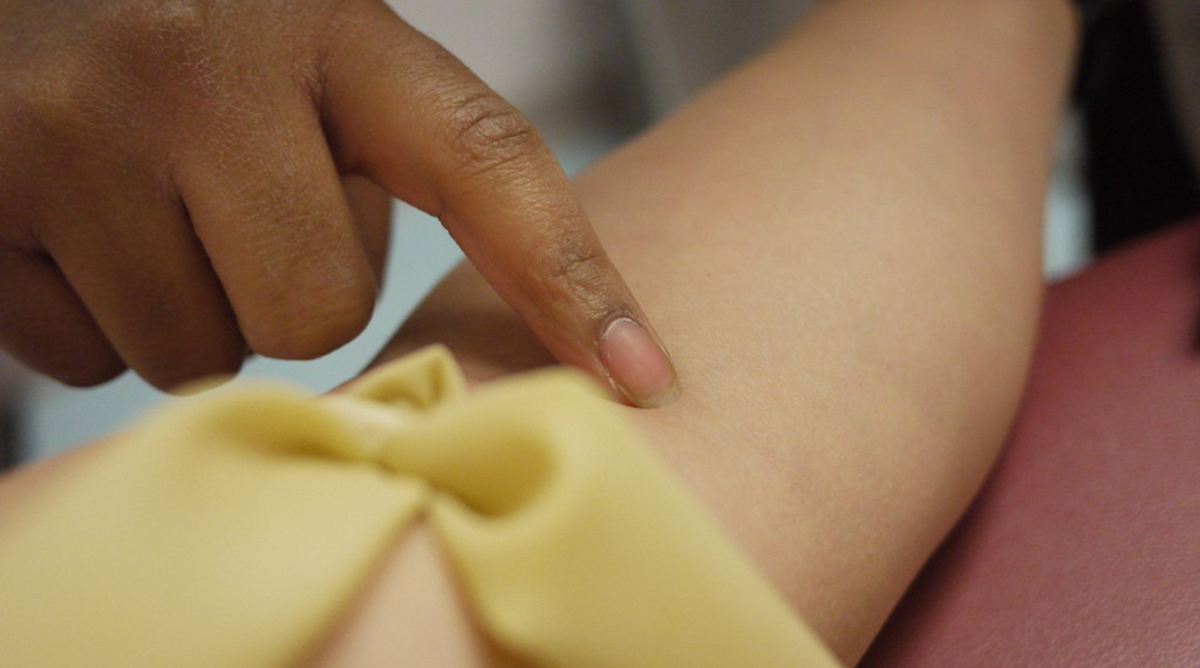Table of Contents
6. Make sure you are adequately hydrated, that you have drunk enough water, before you report for your blood test
Especially if it usually takes more than one poke to draw blood from your veins, it is important to be adequately hydrated before you report for your blood work. Usually it is a good idea to drink additional water about an hour before you go to the lab. The additional fluid increases the volume of blood flowing through your veins and makes them easier for the phlebotomist to see.

7. If you are taking a blood thinner, let the technician know before your blood draw
Medications such as Coumadin (warfarin), Plavix (clopidrogel), Brilinta (ticagrelor), and Xarelto (rivaroxaban), along with many other "blood thinners," increase the probability of bleeding, even from the tiny prick needed for a blood draw. To keep from bleeding on clothes and furniture, your lab tech will need to have cotton gauze and tape on hand to put pressure on the wound.
They will place a cotton swab on the wound and wrap the the swab with tape; you remove the tape 30 minutes to an hour later.
8. Some readings will vary seasonally
Fasting glucose levels, HbA1C, and LDL cholesterol tend to be higher in the winter. Fasting glucose levels may be abnormally low when a blood test is conducted during the first few days of a warm up after a long period of cold weather.
Vitamin D levels may fall during the winter, or if you live in a location where hot summers keep you inside near the air conditioner, during the summer.
9. Dieting to lose weight can make your computed LDL numbers go up
Most laboratories don't actually measure LDL cholesterol. Instead, the estimate LDL cholesterol as 1/5 of the total blood lipids that aren't triglycerides or HDL cholesterol. The other 4/5 of those unmeasured blood lipids is VLDL cholesterol. If you diet to lose weight, or, if you are a diabetic, you start getting better control over your blood sugar levels, your body will make fewer triglycerides. This means there will be more VLDL + LDL cholesterol, but it does not necessarily mean that you will have more LDL cholesterol. The percentages may change--but the tests don't detect this.
See Also: Can A Simple Blood Test Detect Cancer?
10. You don't have to have your doctor's permission to get blood tests
In most states of the United States, in the UK, and in Japan, you can order your own blood tests. This kind of testing can provide valuable information about whether you would benefit from taking nutritional supplements, or it might help you know how well your medications or health routines are working between doctor visits. You should not diagnose yourself on the basis of your lab numbers, but self-directed testing can provide you with the right questions to ask your doctor early enough to get effective treatment.
- Liang WW. Seasonal changes in preprandial glucose, A1C, and blood pressure in diabetic patients. Diabetes Care. 2007 Oct
- 30(10):2501-2. Epub 2007 Jun 22.
- Kim TH, Kim KW, Ahn HY, Choi HS, Won H, Choi Y, Cho SW, Moon JH, Yi KH, Park do J, Park KS, Jang HC, Kim SY, Park YJ. Effect of seasonal changes on the transition between subclinical hypothyroid and euthyroid status. J Clin Endocrinol Metab. 2013 Aug. 98(8):3420-9. doi: 10.1210/jc.2013-1607. Epub 2013 Jun 14. PMID: 23771919
- Mindmap by steadyhealth.com
- Photo courtesy of Thirteen Of Clubs by Flickr : www.flickr.com/photos/thirteenofclubs/5457364149


Your thoughts on this